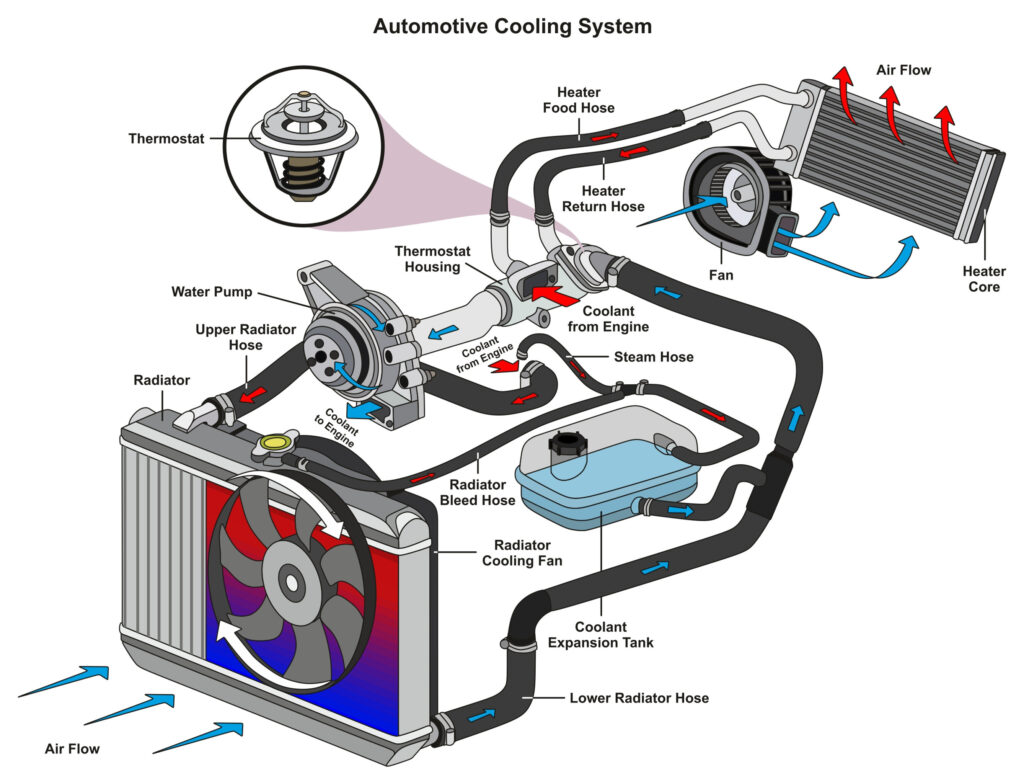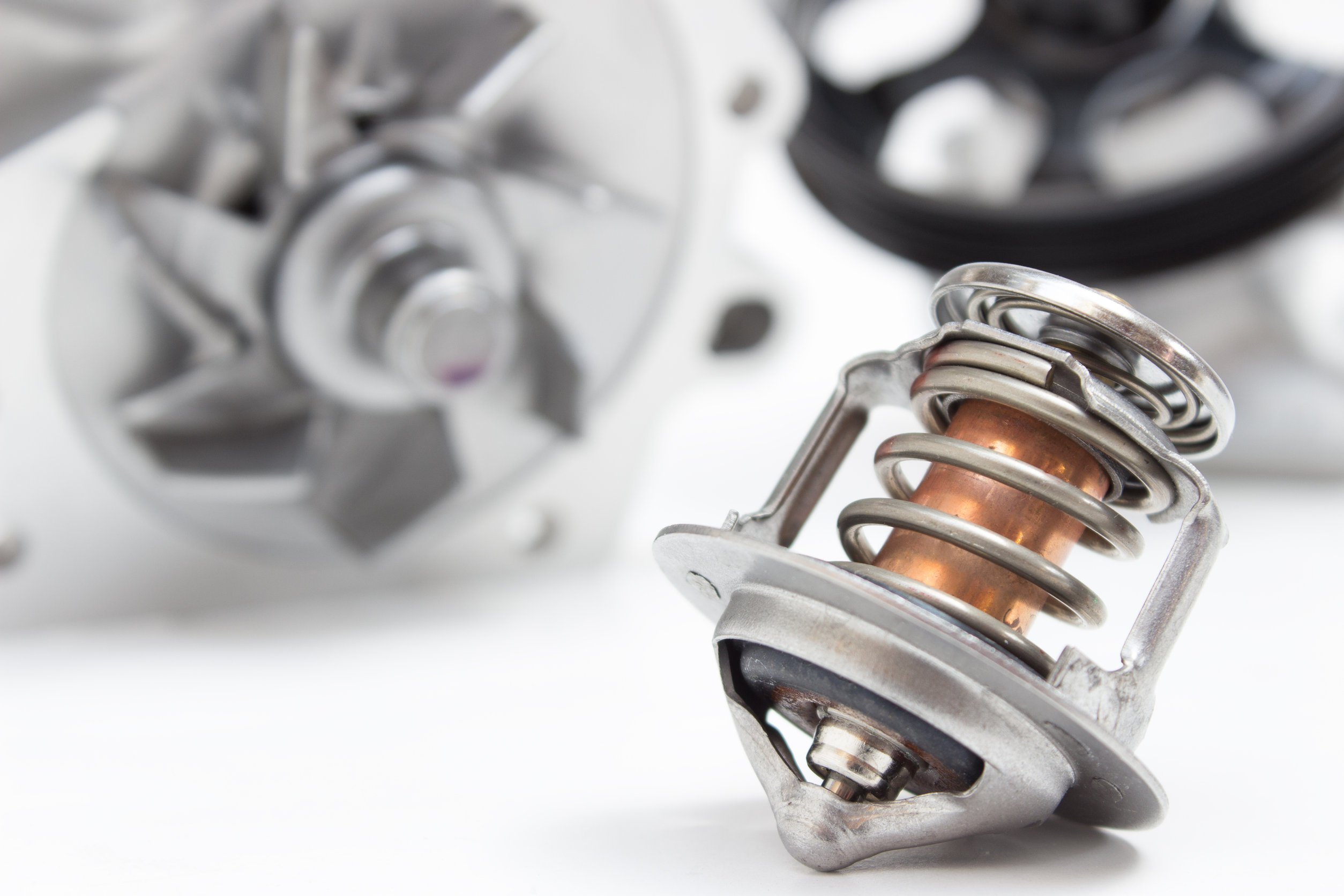Imagine for a moment that you just taken the time to replace the thermostat in your vehicle so that you can get your temperatures back under control…
… But the problem hasn’t disappeared!
Seriously frustrating, right?
You bet.
Sadly, sometimes the issues with temperature control in your vehicle have little to nothing to do with the thermostat itself.
A lot of car owners have discovered that even after replacing the thermostat with brand-new, OEM replacement parts they are still dealing with wild temperature swings or dangerously high temperature problems.
What’s causing all that mayhem?
Why is My Car Still Overheating After Changing Thermostat?
Your New Thermostat is Faulty
The first thing that you have to consider – and it’s definitely a bitter pill – is that the new thermostat you have put in your vehicle is actually compromised itself.
This doesn’t happen a lot. But it does happen (and probably more often than most parts manufacturers like to admit).
You go in, you order a brand-new thermostat, and everything looks great.
You put the part in, fire up your vehicle – and it’s pretty clear (almost right away) that the new thermostat isn’t working.
The best thing to do here is to remove the part and return it ASAP. Explain the issue, ask for a replacement, and test the new component before you move forward.

Your Water Pump is Breaking Down
If your new thermostat checks out okay you’re going to want to have a closer look at your water pump system.
Your water pump (which should probably be called your coolant pump) works to move coolant throughout the engine and the radiator to dissipate the extreme heat your vehicle generates when running.
If the water pump isn’t working the way it should be all that hot coolant isn’t going to circulate and your thermostat is going to have a nightmare of a time trying to regulate temperatures.
You’re Dealing with Worn Out or Loose Belts
Sometimes, though, accessory belts that are driven by your main motor become loose, wobbly, or worn-out and cause water pump problems all on their own.
If these key components become loose or worn-out (or worse, split completely) your water pump isn’t going to spin up at the speed it has to. It isn’t going to be able to regulate temperatures the way it should. And your thermostat is going to become overwhelmed.
Check all of your belts and confirm that they have the right amount of tension. Look for cracks, no matter how small. If you start to hear a lot of whining from your engine bay you’re probably dealing with loose belts, too.
You’re Coolant Needs to Be Replaced ASAP
Engine coolant should be inspected when you swap out your thermostat to be sure that it is still good to go.
A lot of folks like to swap out and flush their engine coolant after replacing a thermostat just to be sure that there’s nothing wrong in this department.
Your engine coolant (sometimes called antifreeze) works to protect your engine from overheating but it also works to prevent corrosion from happening inside of the coolant system as well.
Old coolant filled with sediment from the engine can lead to clogs, backups, or just in efficient cooling – and that’s going to cause your temperatures to skyrocket.
Something’s Wrong with Your Radiator
A faulty radiator is a less common problem today than it used to be in the past, thanks in large part to modern engineering and materials.
This doesn’t mean that modern radiators are flawless, though.
If components of your radiator have started to fail (are breaking down, are gumming up, or just not cooling things down efficiently) temperatures will bubble up higher and higher no matter what.
If you start to see white flaky sections on your radiator (usually near the corners of the system) it usually means that coolant isn’t getting into those nooks and crannies. This is something you’ll want to have a legitimate mechanic inspect for you.
The Radiator Cap is Faulty
Believe it or not, a radiator cap that isn’t working the way it should can not only because temperatures in your vehicle to skyrocket but can even cause “ghost coolant loss” or even prevent your vehicle from turning on in the first place!
Your radiator cap creates a vacuum seal every time your vehicle is turned on and coolant gets pushed through the system.
If the radiator cap is old, cracked or broken, or if the seal inside of the radiator cap itself isn’t as strong as it was before the odds are pretty good that it’s going to fail you.
All of a sudden you’re going to notice coolant levels dropping pretty quickly (we are talking in 30 minutes or less) without any obvious signs of leakage. That’s because the coolant isn’t leaking out but is instead boiling off – leaving behind the antifreeze that has a higher boiling point than the water mixed right in.
Replace your radiator cap with OEM equipment for next to nothing and a lot of these problems vanish immediately.
There’s Something Wrong with the Electrical Components
Today’s modern vehicles are far more reliant on electrical systems and computerized components than ever before. Your thermostat itself might even be almost 100% electrically controlled!
If there’s something wrong with the wiring, a glitch in the computer, or an electrical component that is working the way it should your thermostat might be on the fritz as well.
Check your fuses. Check the electric motor that runs the fan in your vehicle. Look for obvious signs of damage and repair anything that could have become damaged or failed.
The Head Gasket Could Be Cracked or Leaky
If your vehicle continues to overheat even after replacing your thermostat you may be dealing with a leaky head gasket – and that’s a bit of a nightmare scenario.
The head gasket is the main seal between your engine block and the cylinder head. This is necessary to create the maximum amount of compression and to avoid coolant or engine oil from weaseling its way into the actual combustion chamber.
A leak here is an almost unbelievably expensive project to repair. We are talking to the point where sometimes it makes more sense to get a new car than to undertake head gasket repair jobs.
There are some products on the market that promise to “stop leaks” in head gaskets – products you add directly to the coolant tank itself and allowed to circulate throughout the vehicle.
Some of them are halfway decent. Some of them can do more damage than good, though. It’s a problem you’ll have to navigate with the help of a mechanic no matter what.
